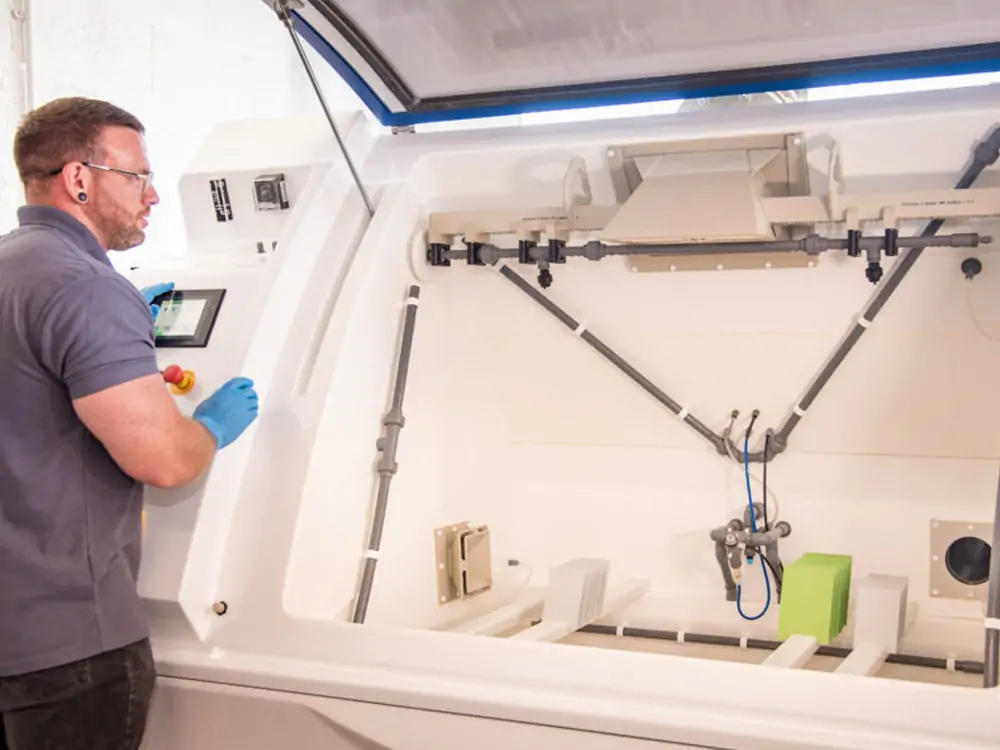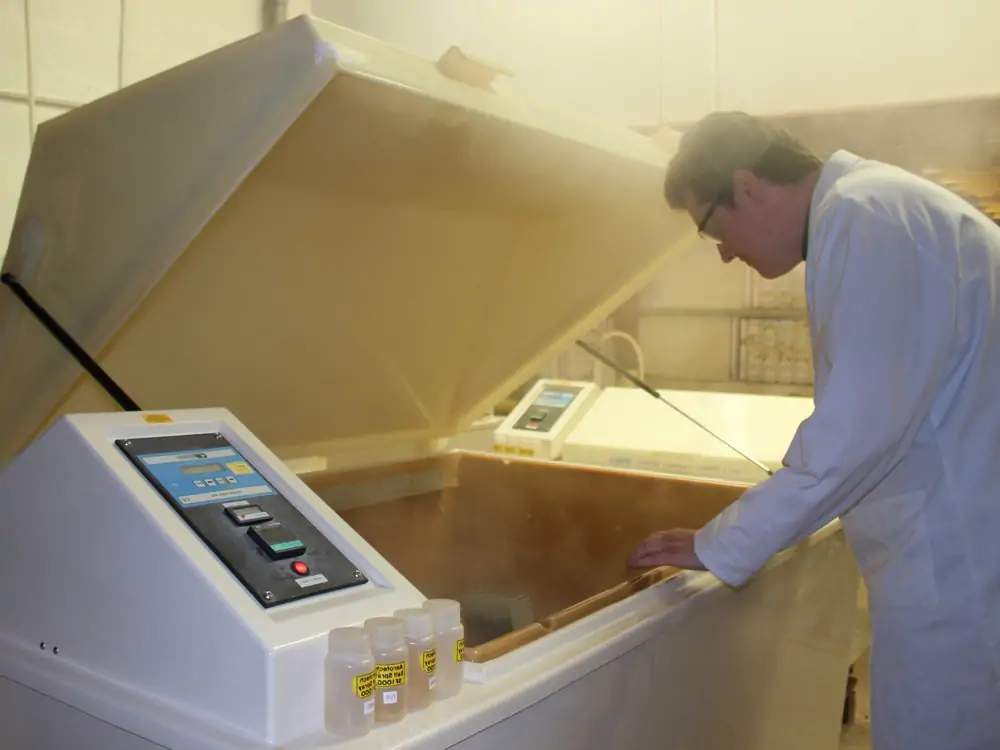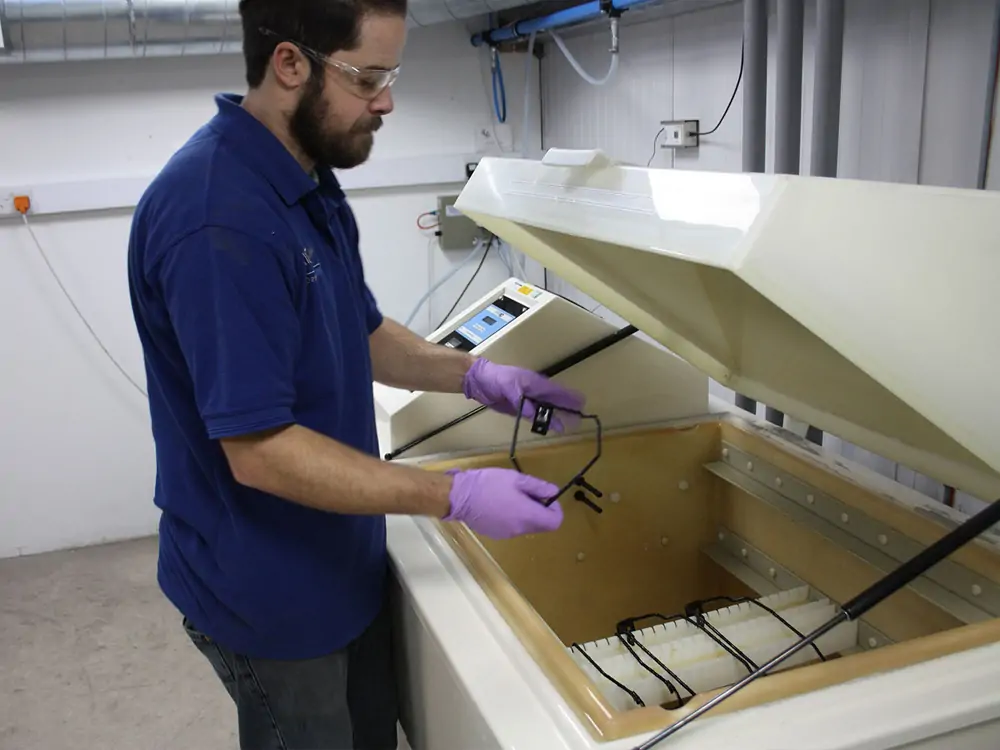Corrosion is a big problem for metals. It can weaken things in lots of different industries. ASTM International came up with a test called ASTM B117, also known as Salt Spray Testing, to fight against this. This test is important for checking how much corrosion is happening.
ASTM B117 works by creating tough conditions like the one’s materials face in the real world. It does this by putting samples in a controlled salty environment, which mimics how materials can get worn down over time. This helps engineers and makers learn a lot about how well their products will hold up. ASTM B117 is a really important test in material science and engineering. It’s good at copying harsh conditions that cause corrosion. It’s a key standard for checking how much corrosion is happening. As industries keep moving forward, this salt test will stay important in making sure materials last a long time.

Development of ASTM B117 Testing
The journey of ASTM B117 evolves with the ever-changing landscape of industries. The evolution of this salt test over the years undergoes continuous refinement and adaptation. As industries advance and new materials emerge, the standard incorporates the latest technological advancements. This ensures the test standard remains a reliable tool for assessing corrosion resistance.
Test Parameters in ASTM B117 Test Standard
- Duration and Conditions
The duration of the test must be calibrated. Too short a duration may not capture the corrosive effects. It leads to misleading results. Long tests can result in an overestimation of corrosion, leading to unnecessary concerns. Environmental conditions play a vital role. This salt test aims to mimic real-world scenarios, subjecting specimens to a saline environment. This exposure allows us to test material performance.
- Salt Solution Conditions
The concentration of the salt solution is a pivotal parameter in ASTM B117 salt testing. It influences the rate of corrosion and, the result’s accuracy. If high salt concentrations fast the corrosion process, it leads to more degradation. Low salt concentrations replicate harsh conditions.

Test Procedure for ASTM B117 Test Standard
1. Preparation of Specimens
Getting specimens ready is a super important part of doing this salt testing. It makes sure the results are right. Here’s a closer look at this important step:
- Choosing the right specimens is important. They need to be like the materials being tested and how they’ll be used. This makes sure the testing is like what happens in the real world.
- The specimens get a lot of attention to make sure there aren’t any extra things that could mess up the results. This means cleaning, getting rid of grease, and ensuring the surface looks the same. Any coverings or junk on the surface get taken off so you see the real material.
- It’s super important that the specimens are all in the same conditions. This means things like how rough the surface is, what it’s made of, and how it’s put together. By making all these things the same, engineers can see exactly how corrosion affects the material itself.
2. Testing Apparatus
The apparatus for use in this salt standard testing is important to ensure the optimal salt spray conditions.
- Salt Spray Chamber: This is like the heart of the whole setup. It makes a special space where specimens get hit with a mist that’s like salty water. This makes it act like really harsh conditions.
- Air and Spray System: This part makes sure the salty solution spreads out evenly in the chamber. Getting the spray just right is key for getting results that are accurate and the same every time.
- Temperature and Humidity Controls: These conditions keep the testing conditions steady. The chamber sets the temperature and humidity just right, so the test is like what happens in the real world.
- Safety Concerns: It has fans to get rid of fumes and things to keep the people running the test safely.

Interpreting Test Results
- Corrosion Resistance Assessment
Understanding how corrosion messes with materials is important. It’s not just about what you see on the surface – it’s about the big changes that happen inside. This helps figure out if materials can last in places where corrosion happens a lot. Engineers look at things like how fast corrosion happens, what kind it is, and how much things get messed up. Then they use this info to pick materials and change how things are designed. They also check if the test results match up with what happens in the real world. This makes sense of the salt testing that might go through in their actual application.
- Failure Analysis
Conducting a thorough failure analysis is an important component of the ASTM B117 test. It allows us to check the weaknesses and develop enhancements so engineers can look for ways to make things stronger with info from the breakdown analysis. This might mean changing what the material’s made of, how it’s treated, or how it’s designed to fight against corrosion.
Industrial Applications of ASTM B117 Salt Testing
Automotive Sector
This test puts car materials in a salty environment to see how they corrode over time. Engineers learn about how well the materials resist corrosion in these tough conditions. This helps them choose the right materials and designs. The test also makes sure everything follows the rules set by the industry. Automotive industry rules make sure vehicles last and stay safe. Manufacturers use it to show they follow these tough rules. This gives consumers confidence in a long-lasting and trustworthy product.
Aerospace Sector
Salt spray fog testing mimics tough conditions of aerospace parts. This includes moisture, salt, and other things that cause damage. This testing helps engineers check how well materials can resist damage. It is important to pick the right materials and designs. The aerospace industry has strict rules. Safety and trustworthiness are super important. If materials aren’t strong, it can be bad. ASTM B117 testing gives an extra layer of confidence. So, aerospace engineers can choose materials that meet the industry’s tough demands.
Advantages of ASTM B117 Testing
- This salt test identifies vulnerabilities in the development process. This leads to the creation of more reliable and durable products.
- Minimizes the risk of product replacements, and ensures quality assurance efforts.
- It yields long-term cost savings. It prevents premature product failure and replacements.
- It provides a proactive approach to product development.
- It optimizes material selection and design to ensure longevity and reliability.
- It provides data on how materials hold up against damage. It helps to make smart choices in picking materials and designs.
- It lowers the chance of using not-good-enough materials in applications. By making materials go through fast corrosion, engineers can see how they’ll do in the long run and choose wisely for specific applications.
- ASTM B117 helps in a back-and-forth design process, making products tougher and more reliable. This makes things last longer and less likely to break early.
The Final Thoughts
In the world of materials, ASTM B117 plays a crucial part in checking how materials deal with corrosion. It’s a big challenge for various industries to make sure products work optimally and ensure longevity. This takes place in optimal conditions where materials undergo tough conditions, so engineers can see how they have to work according to it. This testing is important to make sure materials can handle corrosion. Products need to withstand even harsh conditions. ASTM B117 puts materials to the test in conditions like they’d face in the real world. By using these salt standard tests, engineers make informed decisions while choosing products that last longer. While new products keep changing how we test for corrosion. This testing keeps being a big player in making sure materials stay strong and make our world better.
For more environmental test chamber, Please visit: https://chiuventionclimatechamber.com
For more environmental test simulation programmes,environmental testing knowledge, instrument knowledge, and environmental testing laboratory knowledge, please contact us: [email protected]